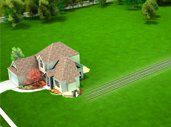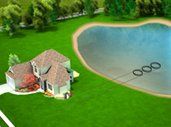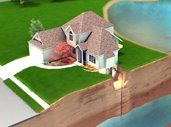Heating
THE DIFFERENT HEATING SYSTEMS
- Electric Baseboards
- Hot Air System
- Hot Water System
- Geothermal Energy System
- Heat Pumps
ELECTRICAL Baseboards
Electric baseboard heaters account for around 85% of new heating installations in Quebec. Several factors explain their popularity:
- Their low purchase cost
- Simple to install
- Requires almost no maintenance
- Quiet
- Heats each room individually (zoning)
On the other hand, baseboards provide uneven heat (warmer at higher elevations, colder near the floor) and cannot be integrated into an air handling unit. An additional device is therefore necessary if, for example, you wish to air-condition your home.
Request a Quote
Contact Us
Hot Air System
The hot air system, also known as forced-air, can run on electricity, natural gas, propane gas, oil (fuel oil) or even wood. This system consists of a central generator that heats the air and then distributes it to all the rooms in the house via a network of ventilation ducts. It is without a doubt the system that offers the most functions.
- Humidification
- Air filtration
- Air conditioning
- Zoning
However, it is also the noisiest and the equipment requires considerable physical space and requires regular maintenance.
Hot Water System (Radiator or Floor)
The hot water system consists of a central boiler, fuelled by natural gas, oil or electricity, which heats the circulating water in a network of pipes. Room radiators or floor systems radiate the heat from the water into the rooms. Comfortable and silent when properly adjusted, it allows the integration of a hot water production device for domestic needs.
However, the radiators take up floor space and it is impossible to integrate an air treatment device. On the maintenance side, a system flush is recommended every year. The boiler in an oil-fired system requires annual maintenance and the injector must also be replaced. For a natural gas-fired system, the boiler should be serviced approximately every two years.
Geothermal energy system
Geothermal energy uses another type of heat pump that extracts heat from the ground, a groundwater source or even a lake and transfers it to a heat pump located in the house. This energy is transported to the house through a network of underground piping called a loop. Although the ground temperature is constant (about 10°C), it is not sufficient to heat a home. In Quebec, the forced-air system is the distribution system most often combined with a ground-source heat pump to distribute heat from the ground. This technology is a considerable choice for large-scale residences (3000 sq.ft. and more) because its low energy consumption will allow you to recover its higher investment cost more quickly.
The four different types of geothermal loops
Vertical
The vertical loop represents the best solution for medium sized lots. Holes are drilled in the ground to insert two lengths of pipe joined by a U-shaped connector.
Horizontal
Horizontal loops are used when a large area of land is available. One or more trenches are dug into the ground using a backhoe or excavator. The polyethylene pipes are laid and the trenches are filled in.
Pond loop
This type of loop is suitable when the house is located near a body of water of sufficient size. A series of coils are installed at the bottom of the water body and connected to the supply and return pipes leading to the house.
Open Loop
The open loop is used when there is an abundant source of quality well water. The well must provide sufficient capacity for domestic water supply and for the needs of the geothermal system.
Heat Pump
A heat pump can be used to heat and cool a home. However, it does not produce heat; it draws some of the heat from the outside air and transfers it to the inside of your home. In Quebec, the heat pump must be connected to an oil, gas or electric heating system because it stops working efficiently at an outdoor temperature of about -10°C. The colder it gets, the less efficient the heat pump is and the more the central heating system must take over.
Quebec is therefore not the best place to install a heat pump. The cold weather in many parts of the province makes the product less economically attractive, and the most common type of heat pump is currently the air-source heat pump, which is installed in homes with a warm air heating system. The cost of installing an air-source heat pump depends on the type of unit selected and the heating system in place in the home.







